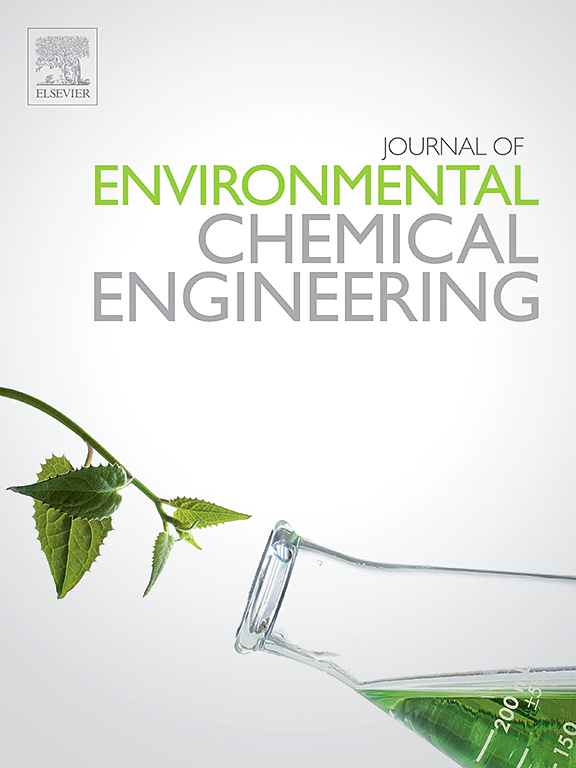Lab to large-scale applications of microaeration in anaerobic digestion: Biowaste digestibility, microbiome nexus, and reactor stability
IF 7.4
2区 工程技术
Q1 ENGINEERING, CHEMICAL
引用次数: 0
Abstract
Anaerobic digestion (AD) is improved with different approaches, including pretreatments, additives, co-digestion, and bioaugmentation. However, these techniques have limitations such as high cost, harmful substances production, and post-treatment of residues. Microaeration is preferable because it is cost-effective, eco-friendly, and easily operable. Recently, the effect of microaeration on AD has drawn researchers' attention. However, in-depth discussion about microbial communities’ shifts, hydrogen sulfide (H2S) removal, oxidative stress, antioxidative mechanisms, and biomethane efficiency under microaeration is still needed to be reviewed. Thus, the current review fully covered the recent research on the impact of microaeration on substrate digestibility, microbial diversity, desulfurization, and biomethane production. Growth of Firmicutes and Bacteroidetes is increased with microaeration, which facilitates the breakdown of organic compounds. The relative abundance of Methanosaeta is increased by 3–90.6 % with microaeration. Lab-scale studies exhibited biomethane enhancement by 7.8–77 % under microaeration. Several methanogens (such as Methanosarcina barkeri and Methanobacterium thermoautotrophicum) overexpressed antioxidative genes (2–30-fold) that encode enzymes such as catalase, superoxidase dismutase, and superoxide reductase. Large-scale microaeration in anaerobic wastewater treatment plants (WWTPs) removed ≥ 90 % H2S. This review further suggests that integrating microaeration technology with bioaugmentation, co-digestion, and biochar could improve the reactor stability for efficient biomethanation and H2S removal.
微曝气在厌氧消化中的大规模应用:生物废物消化率、微生物群关系和反应器稳定性
厌氧消化(AD)通过不同的方法得到改善,包括预处理、添加剂、共消化和生物增强。然而,这些技术存在成本高、产生有害物质、残留物后处理等局限性。微曝气是首选,因为它具有成本效益,环保,易于操作。近年来,微曝气对AD的影响引起了研究人员的关注。然而,在微曝气条件下,微生物群落的变化、硫化氢(H2S)的去除、氧化应激、抗氧化机制以及生物甲烷效率等方面的研究仍需进一步深入。因此,本综述全面涵盖了微曝气对底物消化率、微生物多样性、脱硫和生物甲烷产生影响的最新研究。微曝气促进了有机化合物的分解,增加了厚壁菌门和拟杆菌门的生长。微曝气可使甲烷藻的相对丰度提高3 ~ 90.6 %。实验室规模的研究表明,在微曝气条件下,生物甲烷增加了7.8-77 %。一些产甲烷菌(如barkeri产甲烷菌和热自养产甲烷菌)过度表达过氧化氢酶、超氧化酶歧化酶和超氧化物还原酶等酶的抗氧化基因(2 - 30倍)。厌氧污水处理厂(WWTPs)大规模微曝气去除≥ 90 % H2S。研究进一步表明,将微曝技术与生物强化、共消化和生物炭相结合可以提高反应器的稳定性,从而实现高效的生物甲烷化和H2S去除。
本文章由计算机程序翻译,如有差异,请以英文原文为准。
求助全文
约1分钟内获得全文
求助全文
来源期刊

Journal of Environmental Chemical Engineering
Environmental Science-Pollution
CiteScore
11.40
自引率
6.50%
发文量
2017
审稿时长
27 days
期刊介绍:
The Journal of Environmental Chemical Engineering (JECE) serves as a platform for the dissemination of original and innovative research focusing on the advancement of environmentally-friendly, sustainable technologies. JECE emphasizes the transition towards a carbon-neutral circular economy and a self-sufficient bio-based economy. Topics covered include soil, water, wastewater, and air decontamination; pollution monitoring, prevention, and control; advanced analytics, sensors, impact and risk assessment methodologies in environmental chemical engineering; resource recovery (water, nutrients, materials, energy); industrial ecology; valorization of waste streams; waste management (including e-waste); climate-water-energy-food nexus; novel materials for environmental, chemical, and energy applications; sustainability and environmental safety; water digitalization, water data science, and machine learning; process integration and intensification; recent developments in green chemistry for synthesis, catalysis, and energy; and original research on contaminants of emerging concern, persistent chemicals, and priority substances, including microplastics, nanoplastics, nanomaterials, micropollutants, antimicrobial resistance genes, and emerging pathogens (viruses, bacteria, parasites) of environmental significance.
 求助内容:
求助内容: 应助结果提醒方式:
应助结果提醒方式:


